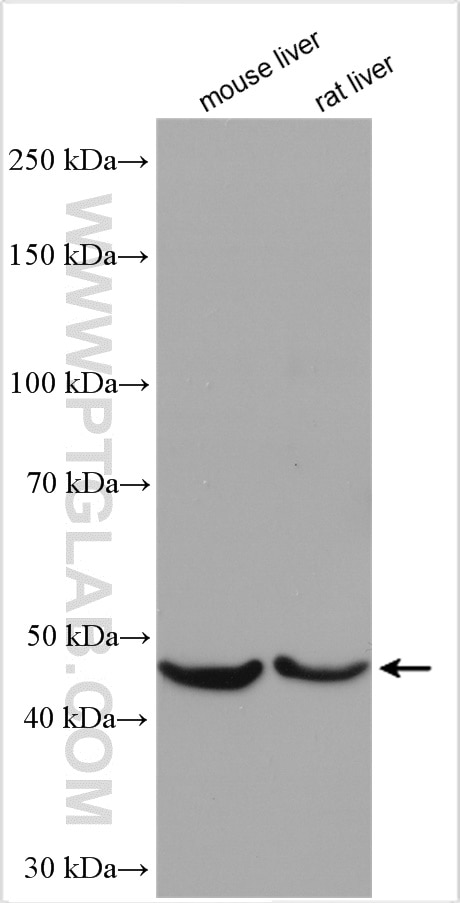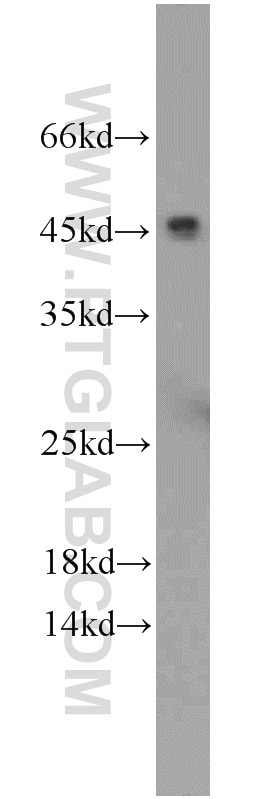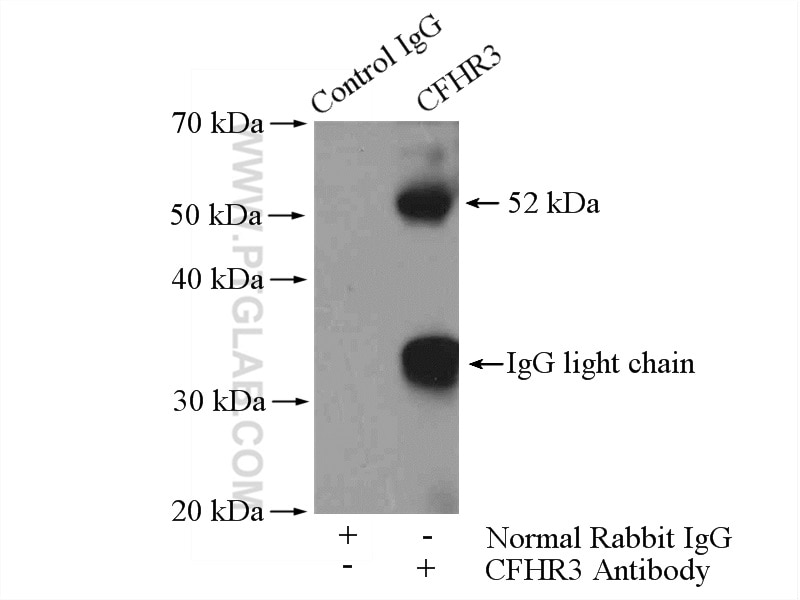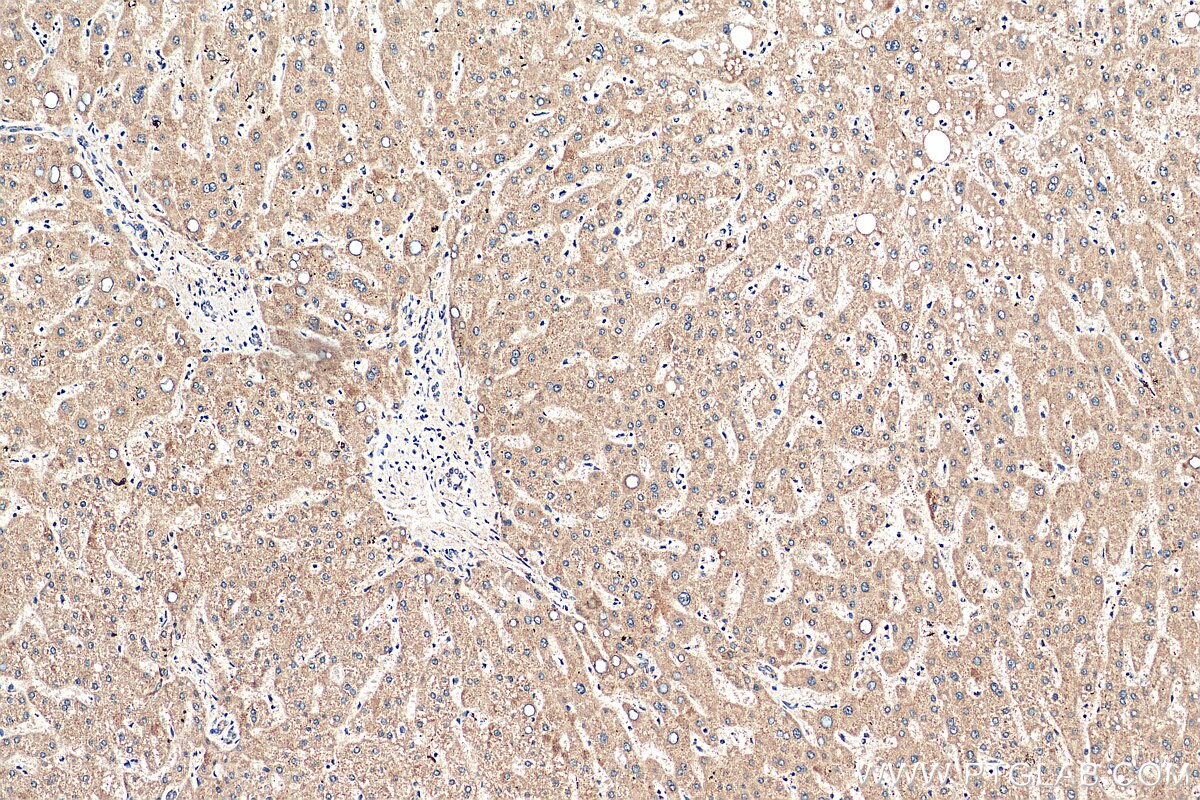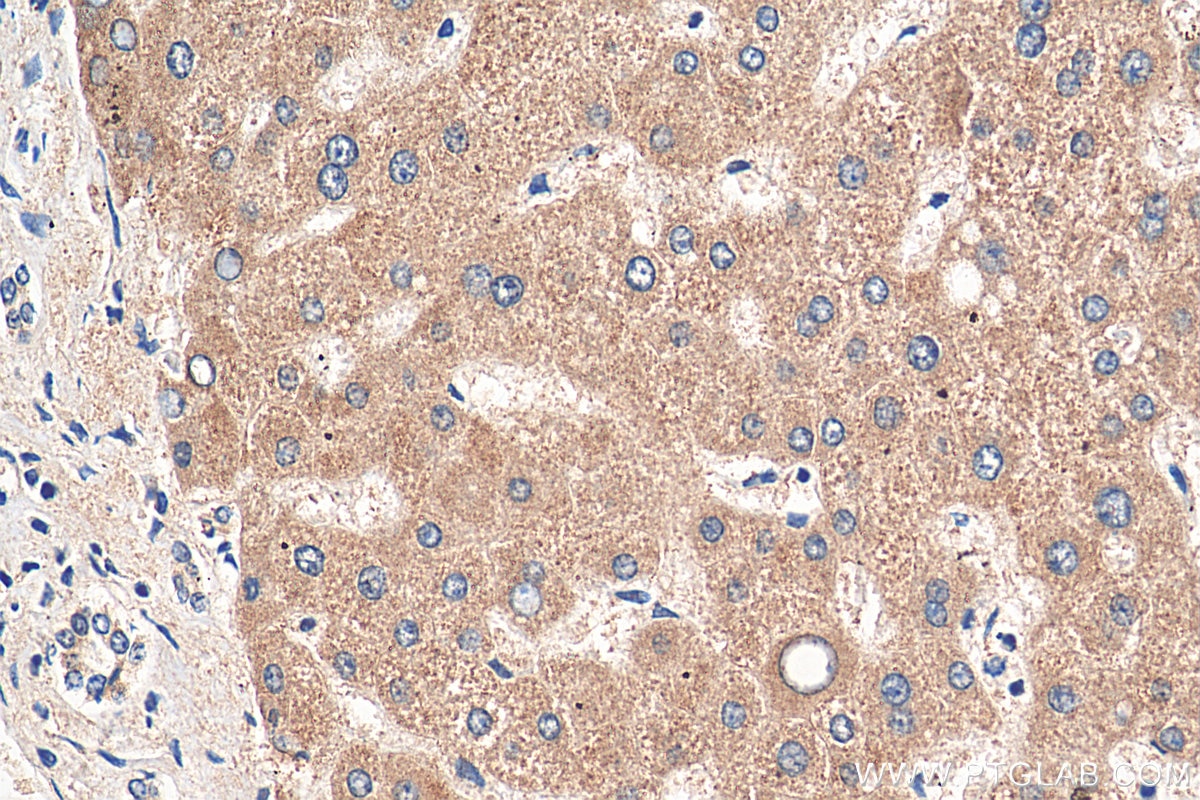Anticorps Polyclonal de lapin anti-CFHR3
CFHR3 Polyclonal Antibody for WB, IP, IHC, ELISA
Hôte / Isotype
Lapin / IgG
Réactivité testée
Humain, rat, souris
Applications
WB, IHC, IF, IP, ELISA
Conjugaison
Non conjugué
N° de cat : 16583-1-AP
Synonymes
Galerie de données de validation
Applications testées
| Résultats positifs en WB | tissu hépatique de souris, tissu cardiaque humain, tissu hépatique de rat |
| Résultats positifs en IP | cellules HepG2 |
| Résultats positifs en IHC | tissu hépatique humain, il est suggéré de démasquer l'antigène avec un tampon de TE buffer pH 9.0; (*) À défaut, 'le démasquage de l'antigène peut être 'effectué avec un tampon citrate pH 6,0. |
Dilution recommandée
| Application | Dilution |
|---|---|
| Western Blot (WB) | WB : 1:1000-1:4000 |
| Immunoprécipitation (IP) | IP : 0.5-4.0 ug for 1.0-3.0 mg of total protein lysate |
| Immunohistochimie (IHC) | IHC : 1:50-1:500 |
| It is recommended that this reagent should be titrated in each testing system to obtain optimal results. | |
| Sample-dependent, check data in validation data gallery | |
Applications publiées
| KD/KO | See 1 publications below |
| WB | See 6 publications below |
| IHC | See 3 publications below |
| IF | See 1 publications below |
Informations sur le produit
16583-1-AP cible CFHR3 dans les applications de WB, IHC, IF, IP, ELISA et montre une réactivité avec des échantillons Humain, rat, souris
| Réactivité | Humain, rat, souris |
| Réactivité citée | Humain |
| Hôte / Isotype | Lapin / IgG |
| Clonalité | Polyclonal |
| Type | Anticorps |
| Immunogène | CFHR3 Protéine recombinante Ag9963 |
| Nom complet | complement factor H-related 3 |
| Masse moléculaire calculée | 330 aa, 37 kDa |
| Poids moléculaire observé | 45-56 kDa |
| Numéro d’acquisition GenBank | BC058009 |
| Symbole du gène | CFHR3 |
| Identification du gène (NCBI) | 10878 |
| Conjugaison | Non conjugué |
| Forme | Liquide |
| Méthode de purification | Purification par affinité contre l'antigène |
| Tampon de stockage | PBS with 0.02% sodium azide and 50% glycerol |
| Conditions de stockage | Stocker à -20°C. Stable pendant un an après l'expédition. L'aliquotage n'est pas nécessaire pour le stockage à -20oC Les 20ul contiennent 0,1% de BSA. |
Informations générales
CFHR3, also named as DOWN16, belongs to the complement factor H-related protein family. Expressed by the liver and secreted in plasma, human CFHR3 is composed of five short consensus repeats (SCRs), and it also has a 19-amino acid signal peptide and four N-linked glycosylation sites. It may be involved in complement regulation. Deletion of CFHR1 and CFHR3 genes was found to be associated with decreased risk of age-related macular degeneration (AMD), and with an increased risk of atypical hemolytic-uremic syndrome (aHUS).
Protocole
| Product Specific Protocols | |
|---|---|
| WB protocol for CFHR3 antibody 16583-1-AP | Download protocol |
| IHC protocol for CFHR3 antibody 16583-1-AP | Download protocol |
| IP protocol for CFHR3 antibody 16583-1-AP | Download protocol |
| Standard Protocols | |
|---|---|
| Click here to view our Standard Protocols |
Publications
| Species | Application | Title |
|---|---|---|
Clin Cancer Res Complement regulatory proteins CFHR1 and CFHR3 and patient response to anti-CD20 monoclonal antibody therapy. | ||
Sci Rep A haplotype in CFH family genes confers high risk of rare glomerular nephropathies. | ||
Exp Eye Res Quantitative analysis of hydroxyapatite-binding plasma proteins in genotyped individuals with late-stage age-related macular degeneration. | ||
PLoS One A novel quantitative hemolytic assay coupled with restriction fragment length polymorphisms analysis enabled early diagnosis of atypical hemolytic uremic syndrome and identified unique predisposing mutations in Japan. | ||
Bioengineered A novel hypoxia-driven gene signature that can predict the prognosis of hepatocellular carcinoma. | ||
Mol Med Rep Complement factor H‑related 3 overexpression affects hepatocellular carcinoma proliferation and apoptosis. |
